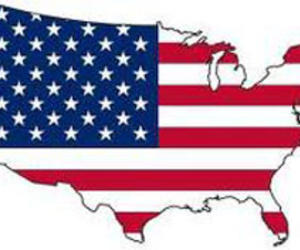U.S.: Some non-Mariel Cubans can be deported
- Submitted by: manso
- Editorial Articles
- 06 / 29 / 2011

U.S. immigration officials said a list of deportable Cubans includes some who didn’t arrive in the 1980 Mariel boatlift.
By ALFONSO CHARDY.ElNuevoHerald.com. Cubans convicted of crimes in the United States who arrived before and after the 1980 Mariel exodus have been deported to their homeland because their names surprisingly appear in a 27-year-old repatriation agreement list.
This week, a U.S. Immigration and Customs Enforcement (ICE) spokeswoman in Washington confirmed the 1984 list of names of Cubans who can be returned to the island includes some who did not arrive during the 1980 boatlift.
“The 1984 accord contains the names of convicted Cuban criminals who arrived in the U.S. pre- and post-Mariel,” said Barbara Gonzalez, the ICE press secretary in Washington.
The issue is important because for years Cuban exiles have been told only Mariel-era convicts on the list would be deported to Cuba. All others would not be returned, they were told by immigration attorneys and activists, because the Cuban government would not accept non-Mariel Cubans.
The original list named 2,746 deportables. Today, only 665 of those remain in the U.S.
This marks the first time since the 1984 agreement was announced during the Reagan administration that U.S. officials say the repatriation list includes non-Mariel Cubans. The disclosure came as a result of a story in El Nuevo Herald and The Miami Herald Monday that examined the cases of at least three non-Mariel Cubans who had been deported to Cuba in the last five years. “The community has always been led to believe that in order to be on the list you had to have an order of exclusion prior to the approval of the list in 1984,” said Miami immigration attorney Grisel Ybarra, who represents one of the man recently deported.
The repatriation list is the result of U.S. pressures on Cuba to take back Mariel migrants on the ground that they were criminals or had committed and been convicted of crimes.
In Miami-Dade, the disclosure came as a surprise to immigration attorneys and to activists who have been deeply involved with Mariel issues for decades.
Rafael Peñalver, a Miami attorney who led negotiations that ended the 1987 Atlanta and Oakdale Mariel prison uprisings, said that until now everyone familiar with Mariel matters had assumed that the list was made up exclusively of Mariel-era convicts. But he acknowledged that U.S. officials never really explained in detail who was on the list — which remains secret.
“I remember asking then- U.S. Attorney General Edwin Meese if the repatriation list included other Cubans who had not arrived during Mariel and he told me that he couldn’t reveal to me who was on the list,” Peñalver said Tuesday in a telephone interview. “We assumed that only people who arrived during Mariel were on the list, but they never said specifically.”
Peñalver said that three successive attorneys general reassured him that the deportation of non-Mariel Cubans was not a step being contemplated by the federal government.
ICE officials would not say from what specific periods individuals before and after Mariel are included in the list .
Non-Mariel Cubans deported in the last two years include a man who arrived in 1979 and another who arrived in 1981.
Source: //www.miamiherald.com/2011/06/28/2290259/
Comments